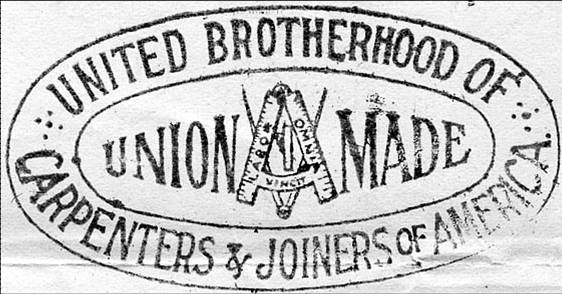|
In 1881, 36 carpenters from eleven cities met in a Chicago warehouse to form a national union. A constitution was formed and a new union was created with 2000 members. This was the birth of the United Brotherhood of Carpenters and Joiners of America. THE EARLY DAYS
During colonial times the carpenter brought his trade to a new land. Along with his skill of building and crafting the master carpenter brought the guild system of organizing his trade as well as a system of training and providing long term welfare for his workers. The industrial revolution brought on a change that ignored and diminished the pride and power of the master, journeyman, apprentice system, emphasizing speed, productivity and profitability rather than quality of work and a healthy and secure lifestyle. A 29 year old carpenter, Peter J. McGuire, felt there was only one appropriate response, protect and defend the trade through collective action of its members. The membership grew to 5,789 by 1885. Then on May 1, 1886 a stand was made for an 8 hour workday initiating a movement to retrieve fare treatment and human rights, later to be referred to as "the great uprising of labor". As a result, union carpenters won higher wages and/or decreased hours in 53 cities in 1886. The brotherhood’s membership soared to 21,423 by the end of the summer. By 1903, union membership had climbed to 167,200, adding to its agenda of advancing wages, reducing hours, cultivating the spirit of fraternity regardless of creed, color, nationality or politics, to include the belief that the union should actively educate its members. Peter J. McGuire founded Labor Day to show the power of organized labor in claiming its own holiday and to recognize the American labor workforce for its great contribution to our society. TODAY
Today these precepts still hold true. After many years of fighting for carpenters against open shop legislation, employer associations and economic depressions, the wages of the union carpenter have continued to rise keeping pace with economic changes. Health benefits and pension are at a high standard and apprenticeship and ongoing training is state of the art. The skilled nature of the carpentry trade is its strength. The goal to genuinely represent the interests of all working women and men to stand up on behalf of basic workers’ issues, such as decent wages, health and safety, civil rights, and a secure environment still holds true today. "Without the trade union, the workman meets the employer at a great disadvantage." 
|